Whistler, James Abbott McNeill
1834 – 1903
American
Whistler was born in the United States and learned the art of etching while posted in the map division of the Navy in Washington D.C.
As a young man, he left America for Europe where he divided his time between London and Paris. He studied painting in France and met many influential artists while enjoying the collections in the Musee du Louvre. Eventually it was Whistler’s aptitude for etching that helped to popularize prints among his colleagues.
In 1858, after a trip on the Rhine, Whistler produced his first set of prints and became a pioneer in the art of “open air” engraving. His landscapes alternated with portraits as he recorded the French countryside and its inhabitants. The next year Whistler returned to England and continued his œuvre using the Thames as his subject. The young American artist achieved almost instant success.
For a while Whistler continued to move between London and Paris until a commission from the Fine Art Society took him to Venice. There he perfected his technique and developed a more Impressionistic style. He began to use lithography as an alternative printing method, but finally settled on transfer paper as his method of choice after 1887.
In 1889 Whistler attempted to submit both paintings and etchings to the Exposition Universelle in Paris but when part of this group was rejected he reacted by withdrawing everything. This was a blow to his confidence and it was finally his friendships with the poet Mallarmé and his colleagues Degas, Morisot and Monet that provided inspiration and support. He continued to flourish producing prints in a more classical style. His portraits were considered masterpieces of observation.
The death of his wife in 1896 brought back his wanderlust and he once again lived his life moving between London and Paris. An attempt to found a School of Art in Paris floundered after 3 years. He eventually reached a truce with the “Exposition Universelle” who awarded him the Grand Prize for both his paintings and engravings in 1900. Whistler’s profound influence on artists in France, England and the United States continues to inspire.
-
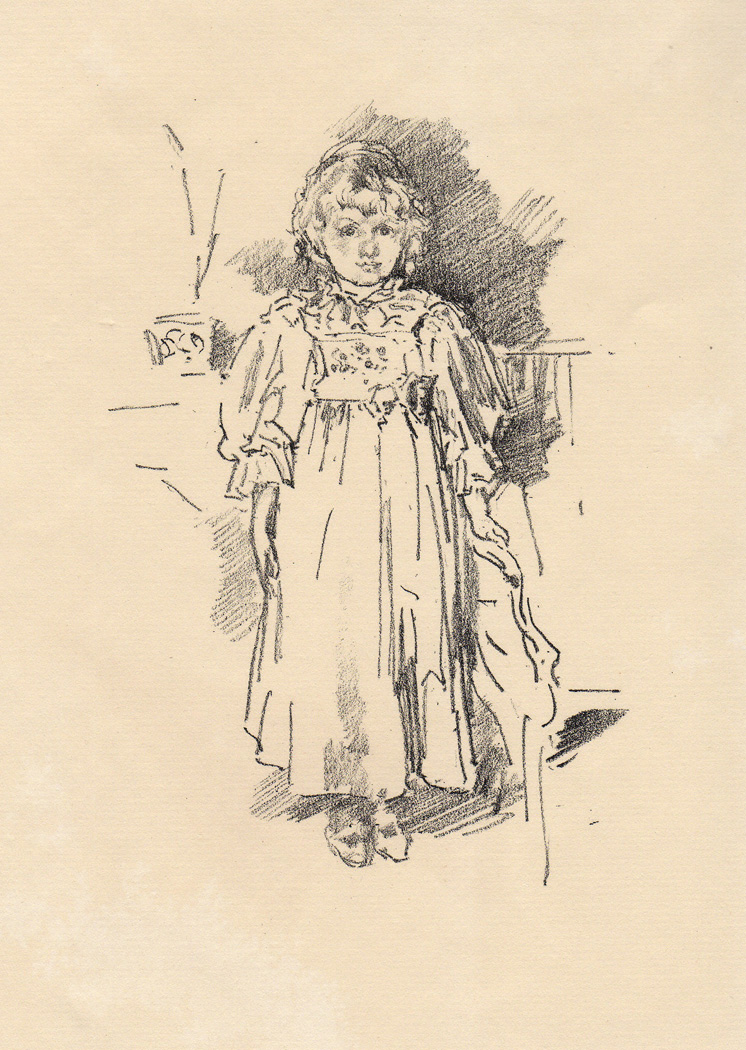
Whistler, James Abbott McNeill
(1834 - 1903) American$650.
“Little Evelyn (W. 110; L. 159; Chicago 146)”, 1896
Transfer lithograph
Issued in The Art Journal 48, No. 135, March 1896
Edition of 3000
6 ¾" x 4 ¾"
Monogrammed in stone with butterfly -
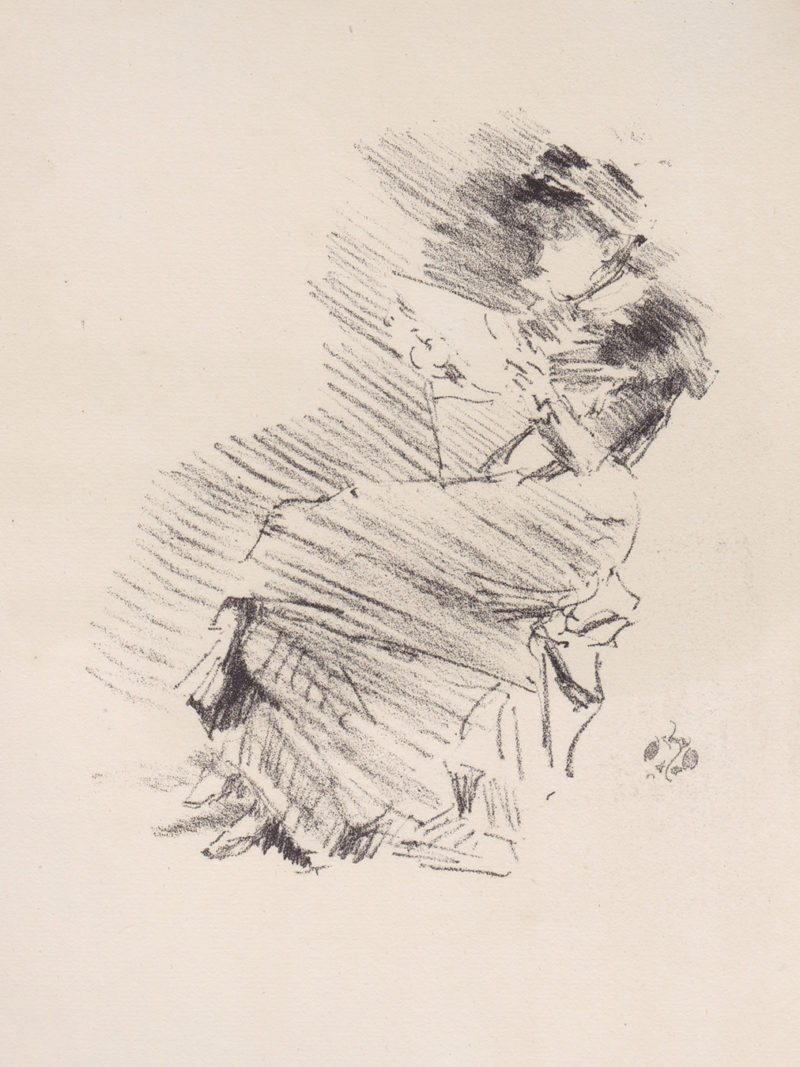
Whistler, James Abbott McNeill
(1834 - 1903) American$1,500.
“Reading (Way 13; Levy 25/26; Chicago 17)”, 1887
Lithograph
4th State/4
Published in “Notes” portfolio in an edition of 100
6 ⅛" x 5"
Monogramed in stone with butterfly -
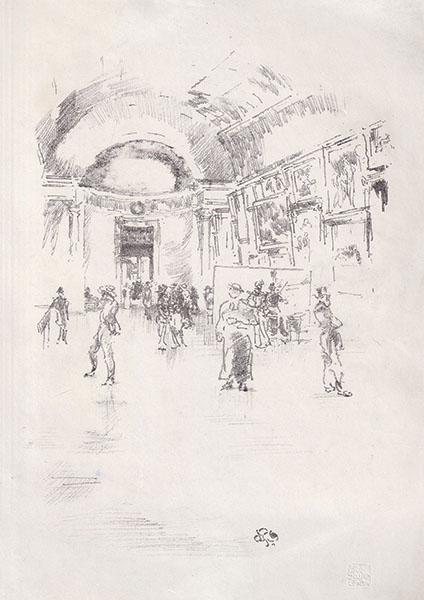
Whistler, James Abbott McNeill
(1834 - 1903) American$1,000.
“The Long Gallery, Louvre (L.83; W.52; Chicago 86)”, 1894
Transfer lithograph
Edition of 3000 published in "The Studio 3", Nº 18, 15 September, 1894
9 ½" x 6"
Blind stamped "The Studio"
Monogrammed with butterfly in stone -
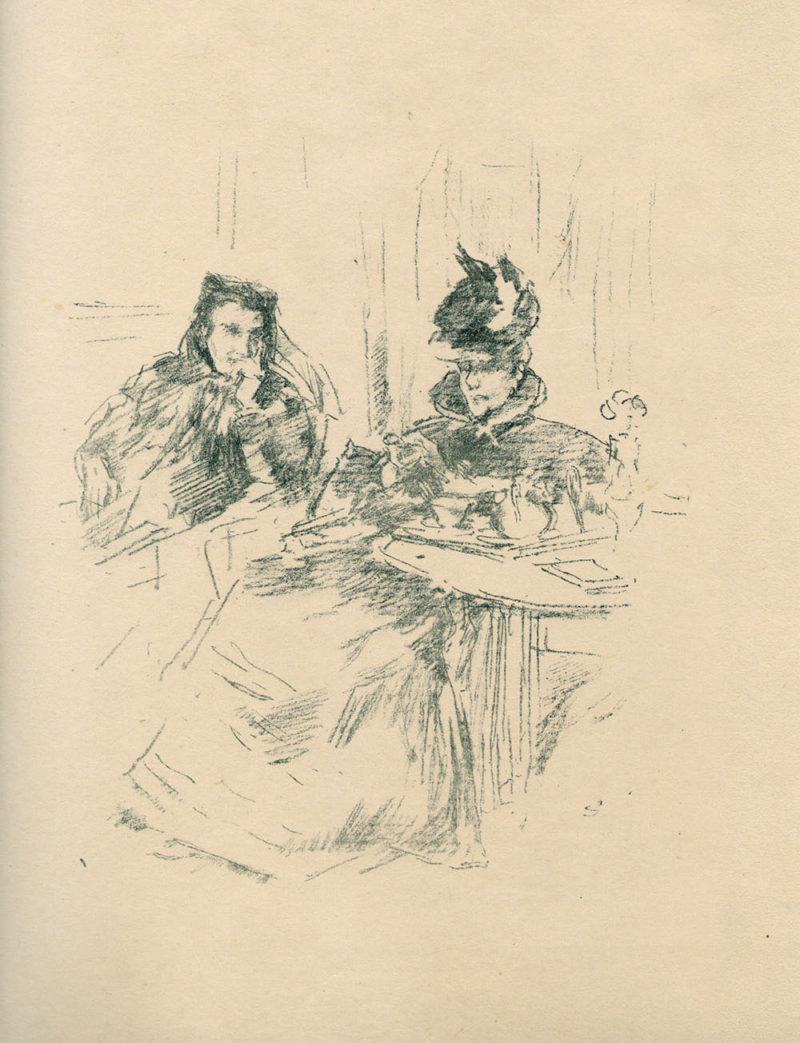
Whistler, James Abbott McNeill
(1834 - 1903) AmericanSOLD
“Afternoon Tea (W.147, L.114, Chicago 173)”, 1897
Transfer lithograph
Edition about 100
7 ½" x 6 ¼"
Monogrammed in stone with butterfly -
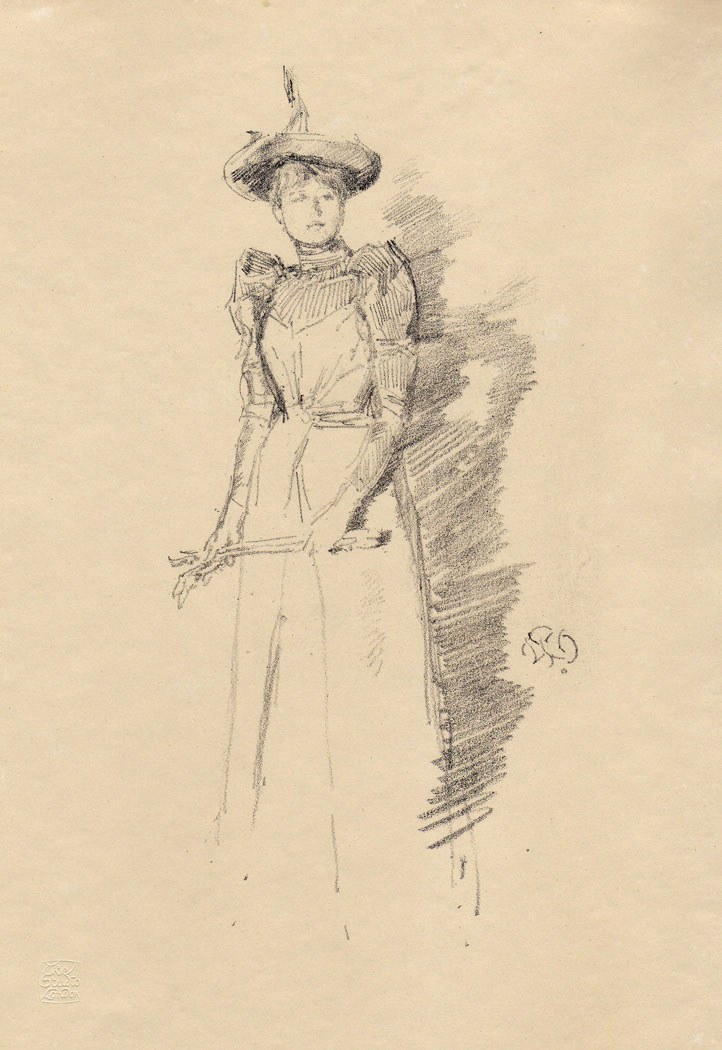
Whistler, James Abbott McNeill
(1834 - 1903) AmericanSOLD
“Gants de suède (W. 26; L. 40; Chicago 35)”, 1890
Transfer lithograph
Published in The Studio 3, No 13, 16 April 1894
Edition of 3000
8 ½" x 4 ¼"
Blind stamped "The Studio London"
Monogrammed in stone with butterfly -
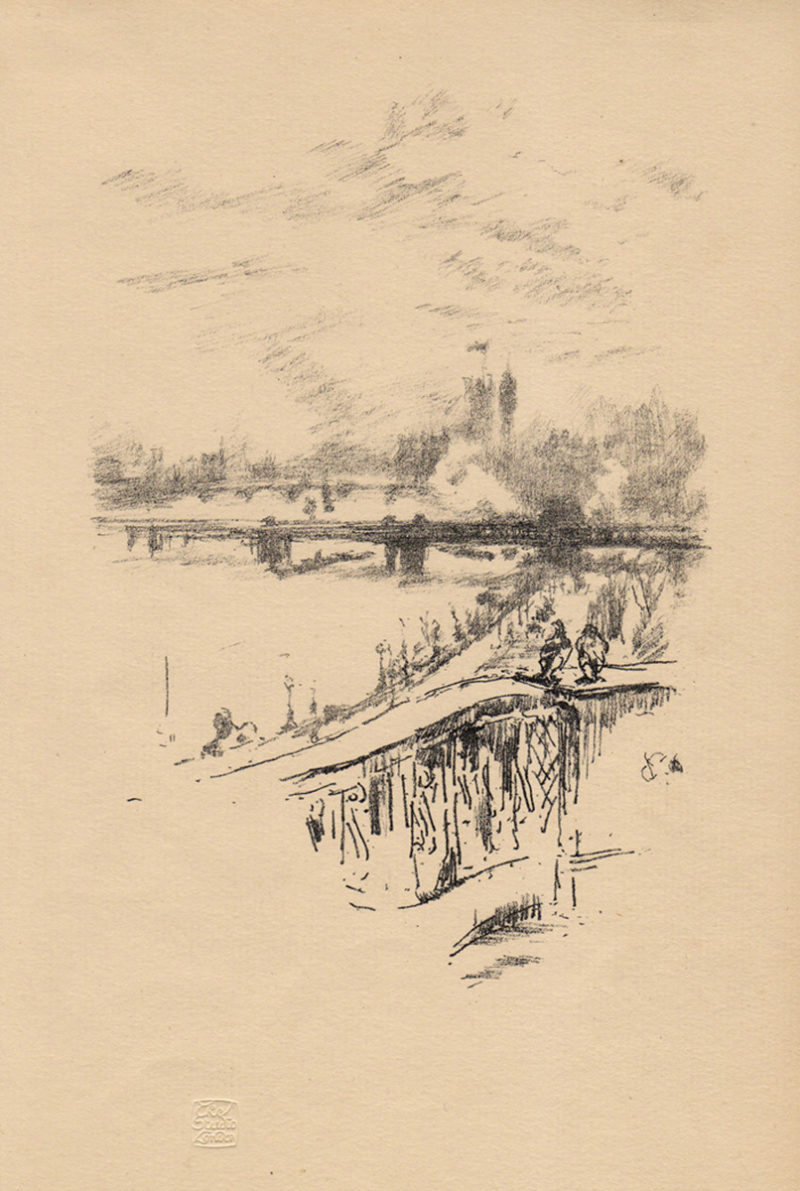
Whistler, James Abbott McNeill
(1834 - 1903) AmericanSOLD
“Savoy Pigeons (W.118, L.164, Chicago 154)”, 1896
Lithograph
Published by The Studio, London
Edition of 3000
7 ¾" x 5 ⅜"
Blindstamped “The Studio London”
Monogrammed in stone with butterfly
